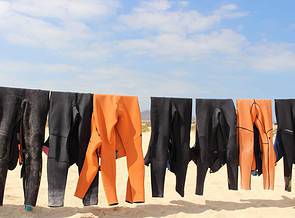The sustainably built shelters are a step up in disaster-relief housing.
Published June 21, 2023 12:30PM EDT
The world seems like an increasingly unpredictable place, thanks to war, famine, natural disastersand the unfolding climate crisis. These large-scale catastrophes can translate to large-scale migrations of people who are fleeing conflict, hunger, and climate breakdown—people who no longer have a place to call home.
Today, there are an estimated 103 million displaced people in the worldwith the average duration of displacement being 20 years. Sadly, the numbers are likely to grow with climate migration due to wildfires, drought, and other environmental pressures. Well-designed emergency housing in such situations is crucial to ensuring that displaced people are able to live in safe and humane conditions until they are able to plan their next step.
That possibility for a sustainable, durable, yet temporary home was the driving force behind the Essential Homes Research Projecta collaborative effort between the Norman Foster Foundation and Holcima Swiss building materials company. The result is a modular structure that is low-carbon, energy-efficient, and can be recycled again at the end of its lifecycle.
Norman Foster Foundation & Holcim
The Essential Home prototype is currently being exhibited at the Venice Biennale until November, and as architect Norman Foster explains:
“Natural and manmade disasters create a continuous exodus of people. During the Venice Biennale we show our work-in-progress idea, the outcome of a few months of intensive activity in collaboration with Holcim. Given that refugees can spend up to 20 years in so-called temporary shelters a measure of long-term success would be the shift from refugee camps to communities, from shelters to homes.”
With the goal of offering durability, safety, dignity and wellbeing for displaced communities, the team says that the prototype has a 70% lower carbon footprint when compared to similar purpose-built structures.
Norman Foster Foundation & Holcim
The unit’s external shell is made from rollable concrete sheets from Concrete Canvas—an alternative to poured concrete that is relatively rigid, yet flexible enough to form into different shapes. The sheets are made with a low-carbon mix of cement from Holcim that produces 20% less CO2, and in total, amounts to using 95% less material overall than solid concrete. Such a flexible-yet-durable approach might be preferable to wasting money on refugee tents that neither last long enough, nor offer enough privacy and protection from the elements.
Norman Foster Foundation & Holcim
Additionally, the unit is equipped with an energy-efficient insulation system that includes Holcim’s Elevate floor boards that protect against water infiltration, and Airium foam in the roof for greater thermal and acoustic comfort and energy efficiency.
The base that the unit sits on is made with recycled construction demolition materials like cement, concrete, and aggregates, which help to make the base more resilient while eliminating the need to excavate for foundations. These recycled demolition materials are sourced using Holcim’sECOCycle—a circular technology platform that the company hopes will help scale up circular construction practices.
Norman Foster Foundation & Holcim
Crucially, these units are built with modularity in mind; they can either be erected as single pods, or put together to form larger units for communal use, or arranged into configurations that form mini-villages with streets and courtyards. The units can be connected with paths made with ECOPact concrete, which contains light-absorbing aggregates that emit light during the night in order to make them more visible. The team explains:
“The modular nature of the design accommodates the evolving needs of families of different sizes. When replicated side-by-side, the curved shape of the homes forms open areas between them, creating public space for everyone.”
Best of all, when the shelters are no longer needed, they can be easily dismantled and either reused or recycled into new materials again.
Norman Foster Foundation & Holcim
The wood-lined interiors feel like a huge step up from conventional tent shelters, and even a step up from other recent flat pack proposals for refugee shelters.
Norman Foster Foundation & Holcim
There are designated sleeping pods for up to five or six people, a dedicated dining area with table and four chairs, quite a bit of storage space, plus a small shower stall and food preparation area off to the other side.
Norman Foster Foundation & Holcim
No word on whether one can actually cook inside, but regardless, this is an enormous improvement over the indeterminate and amorphous feel that most temporary shelters have, which no doubt contributes to refugees’ negative feelings of displacement.
Norman Foster Foundation & Holcim
Of course, designing a sustainable emergency shelter isn’t going to solve the root problems of mass migrations because of things like climate change and political conflicts; we’ve got to tackle those things too. With the bigger picture in mind, we could also increase future resilience by designing houses to be more disaster-resistantso that people are less likely to lose their homes and therefore, potentially have to migrate elsewhere. But in the meantime, it’s still crucial to house those who are already displaced, in a dignified and safe way without compromising on sustainability. To find out more, visit Essential Homes Research Project.
Note: This article have been indexed to our site. We do not claim legitimacy, ownership or copyright of any of the content above. To see the article at original source Click Here













